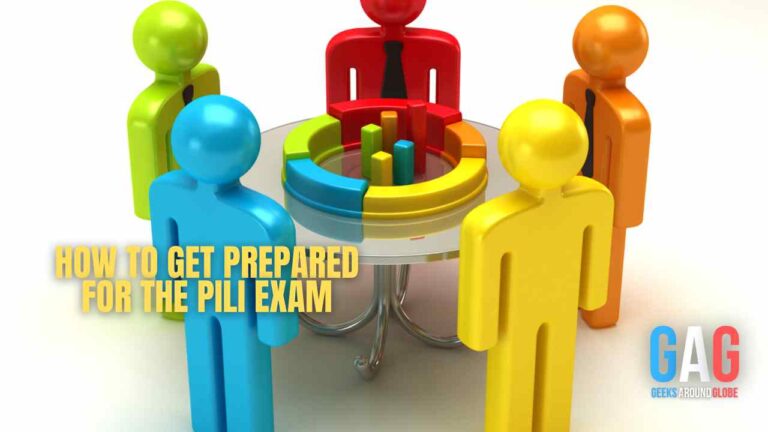Image Source: Unsplash
As parents and guardians, one of our paramount responsibilities is to cultivate the fertile minds of our children—ensuring they are nurtured with the knowledge, skills, and critical thinking abilities that prepare them for future challenges. In the journey of childrearing, deploying thoughtful educational strategies is essential. The role of a caregiver involves not only the transfer of information but also the careful shaping of the child’s environment to promote growth and learning. Here, we will explore foundational educational principles designed to foster a thriving developmental landscape for children, setting them on a course toward intellectual enrichment and personal success.
Create a Learning-Friendly Environment
A conducive learning environment is a springboard for academic achievement. It involves crafting a study area where concentration meets comfort. Integrate elements of minimalism to minimize distractions, and ensure ample lighting and a quiet ambiance. A well-organized, personalized space invites children to engage with their studies and view learning as a positive, structured part of their daily routine.
For example, you could designate a specific area in your home solely for studying and equip it with necessary school supplies such as pens, pencils, and notebooks. This signals to the child that this is a space dedicated to learning and sets the tone for focused study sessions. In case of limited space, consider investing in portable storage solutions like plastic bins or caddies to keep the study area tidy and clutter-free. A lot of clutter can lead to a cluttered mind, ultimately hindering the learning process. Instead of feeling overwhelmed, your child will feel motivated to learn in a clean and organized space.
Select Appropriate Educational Resources
Choosing the right educational materials is pivotal in nurturing a child’s curiosity and promoting effective learning. In today’s digital age, the sheer volume of available resources can be overwhelming. To navigate these waters, prioritize high-quality content that aligns with your child’s learning objectives and age-appropriate understanding.
Consider resources that have stood the test of time while also incorporating newer mediums that are reviewed and endorsed by educational professionals. This mixed approach ensures that children are exposed to diverse forms of learning—be it through books, educational software, or interactive online courses—each chosen to complement their individual learning style and pace. Namely, finding mock exams for the 11 plus in preparation for secondary education can be a daunting task; nevertheless, selecting the right resources can greatly assist in preparing your child to meet this challenge head-on. You can ensure that your child is well-equipped for school by consulting with their teachers or seeking recommendations from other parents in your community.
Encourage Reading
Reading is a fundamental pillar of learning. It develops cognitive abilities, enhances concentration, and can dramatically expand a child’s vocabulary. But how do you spark a love for reading? Leading by example, discussing books, and providing a variety of reading materials can pique interest and make literature a staple in their lives. Advocate for reading as a pleasure, not just a chore, paving the way for a lifelong affinity with the written word.
When reading with your child, ask open-ended questions to foster critical thinking and deepen comprehension. These discussions can also provide insight into their interests and areas of strength, directing you towards relevant educational resources that cater to their needs. Take trips to the library regularly and let your child choose books that capture their imagination. This way, you can build a home library tailored to your child’s interests, further fueling their love for reading.
Incorporate Hands-On Learning
Image Source: Pexels
Children learn best through experience. Hands-on activities present information kinetically, allowing students to explore concepts with their senses. From science experiments to historical reenactments, experiential learning breathes life into abstract theories. This value of experiential learning lies in its ability to reinforce knowledge through application, solidifying understanding, and stimulating curiosity. A good idea is to incorporate hands-on learning into everyday activities and chores, making them fun and educational. For instance, counting toys while tidying up or measuring ingredients while baking can teach children mathematical concepts without feeling like a traditional lesson.
Encourage exploration and experimentation in their free time through arts and crafts projects or building tasks with blocks or Legos. Utilize play as a powerful tool for learning, and your child will thrive in their educational journey. Set aside time for these experiences and view them as essential lessons rather than mere distractions.
Foster Curiosity and Critical Thinking
The future hinges on problem-solvers and innovators. Encourage your children to question, hypothesize, and challenge norms. Develop their critical thinking by discussing various topics and introducing scenarios that require them to think on their feet. Developing problem-solving skills is harnessing their capability to approach complex situations with a strategic mindset.
If your child is curious about something, encourage them to seek answers through research and experimentation. This inquisitive mindset will drive their academic pursuits, leading them to discover new interests and develop a passion for continuous learning.
On the other hand, you can also foster critical thinking by presenting them with real-life scenarios and asking for their opinions. This not only enhances their problem-solving skills but also strengthens their communication and analytical abilities. Get the whole family involved in engaging in debates and discussions to promote a culture of critical thinking within the household.
Utilize Technology as a Tool
Image Source: Pexels
In our digitized age, technology is an educational ally. While its role is nuanced, when leveraged responsibly, it offers a universe of knowledge at our fingertips. Introducing children to educational apps and online resources supplements traditional learning and offers interactive, diverse ways to engage with subject matter. Yet, it is vital to monitor and guide technology usage to ensure it remains a valuable educational tool. Even more so, providing children with opportunities to create their own digital content or explore coding and programming can spark interest in potential future careers while simultaneously developing critical thinking, problem-solving, and technical skills.
Striking a balance between traditional learning methods and technology is key to fostering well-rounded educational growth.
The unique role that caregivers play in the educational development of their children cannot be understated. By thoughtfully crafting spaces conducive to learning, carefully selecting educational resources, nurturing a love for reading, engaging in hands-on learning practices, fostering curiosity and critical thinking, and integrating technology wisely, parents and guardians set the stage for children to flourish intellectually and personally. It is within the sanctum of the home where the foundations for a child’s future are laid, brick by brick, with love, dedication, and strategic intention. Let us, therefore, embrace this noble responsibility with vigor and wisdom, shaping not just our children’s futures, but the future of our society as a whole. Together, we will watch them ascend to the heights of their potential, equipped with the tools and mindsets to overcome the challenges of tomorrow.







